Tiny flying insects buzzing around your kitchen or houseplants can be incredibly frustrating. You might see small flies near your fruit bowl or hovering around your favorite potted plant. The key to getting rid of these pests is knowing exactly what you’re dealing with.
After working as a registered technician for four years and helping families across the DMV area, I’ve learned that proper identification makes all the difference. Our family business has been serving this area for over 50 years, and I’ve seen countless homeowners struggle with these tiny invaders because they weren’t sure what type they had.
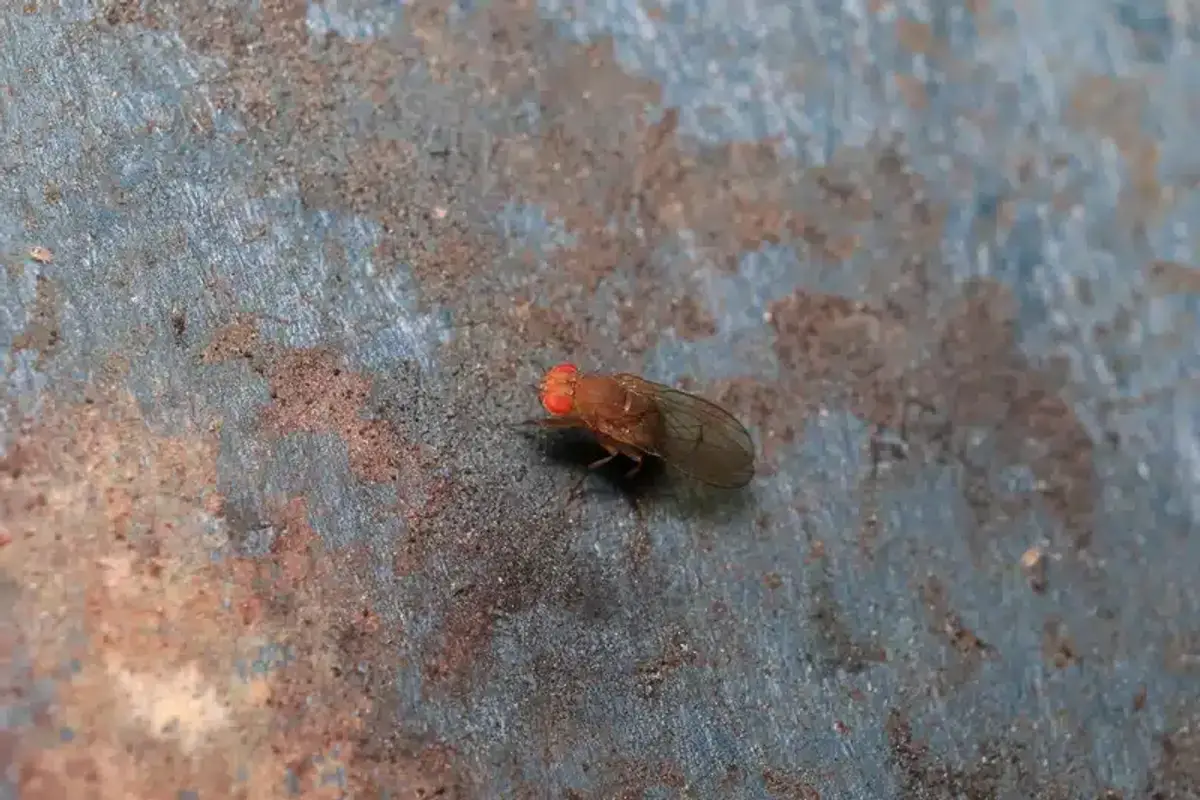
Here’s something that surprises many people: fruit flies are actually a type of gnat. The term “gnat” is a broad, non-technical name for many tiny flies. However, fruit flies have specific characteristics that set them apart from other gnats like fungus gnats and drain flies.
Understanding the Gnat Family Tree
The word “gnat” covers many different types of small flies. It’s basically a catch-all term rather than a specific scientific category. When we talk about gnats vs fruit flies, we’re really comparing fruit flies to other members of the gnat family.
The most common indoor gnats include:
- Fruit flies (Drosophilidae family)
- Fungus gnats (Sciaridae family)
- Drain flies or moth flies (Psychodidae family)
- Phorid or hump-backed flies (Phoridae family)
Each of these has different breeding habits, appearance, and control methods. That’s why identifying them correctly is so important for effective elimination.
Pest Identification: Size and Appearance Differences
When comparing gnats vs fruit flies, size and appearance offer the clearest clues. Let me walk you through what to look for with each type.
Fruit Fly Characteristics
Fruit flies are about 1/8 inch long with a compact, house-fly shape. They have tan-brown front sections with darker rear ends. Most importantly, look for their bright red eyes - this is the easiest way to identify them.
Their flight pattern is slow and hovering. You’ll often see them floating lazily around fruit bowls or sink areas. They move much more deliberately than other small flies.
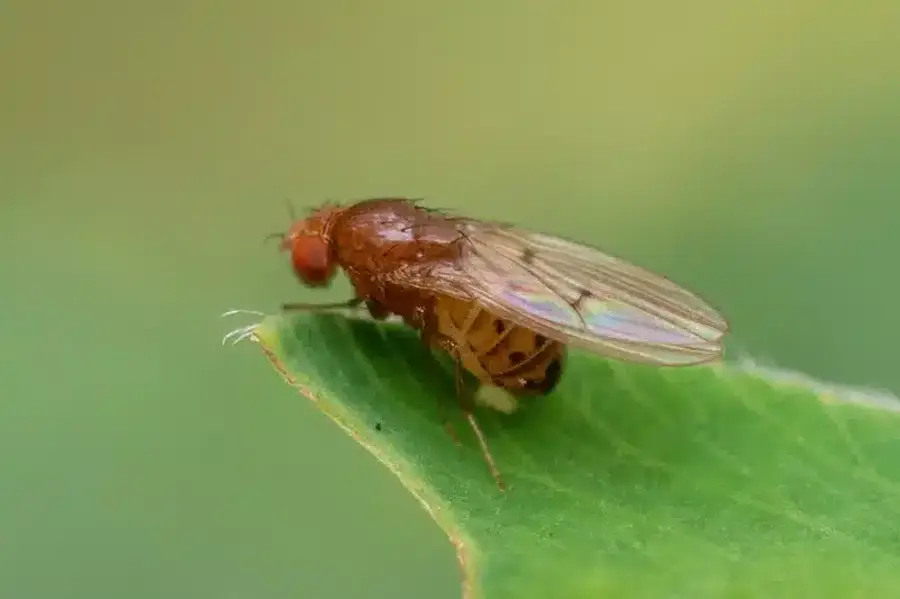
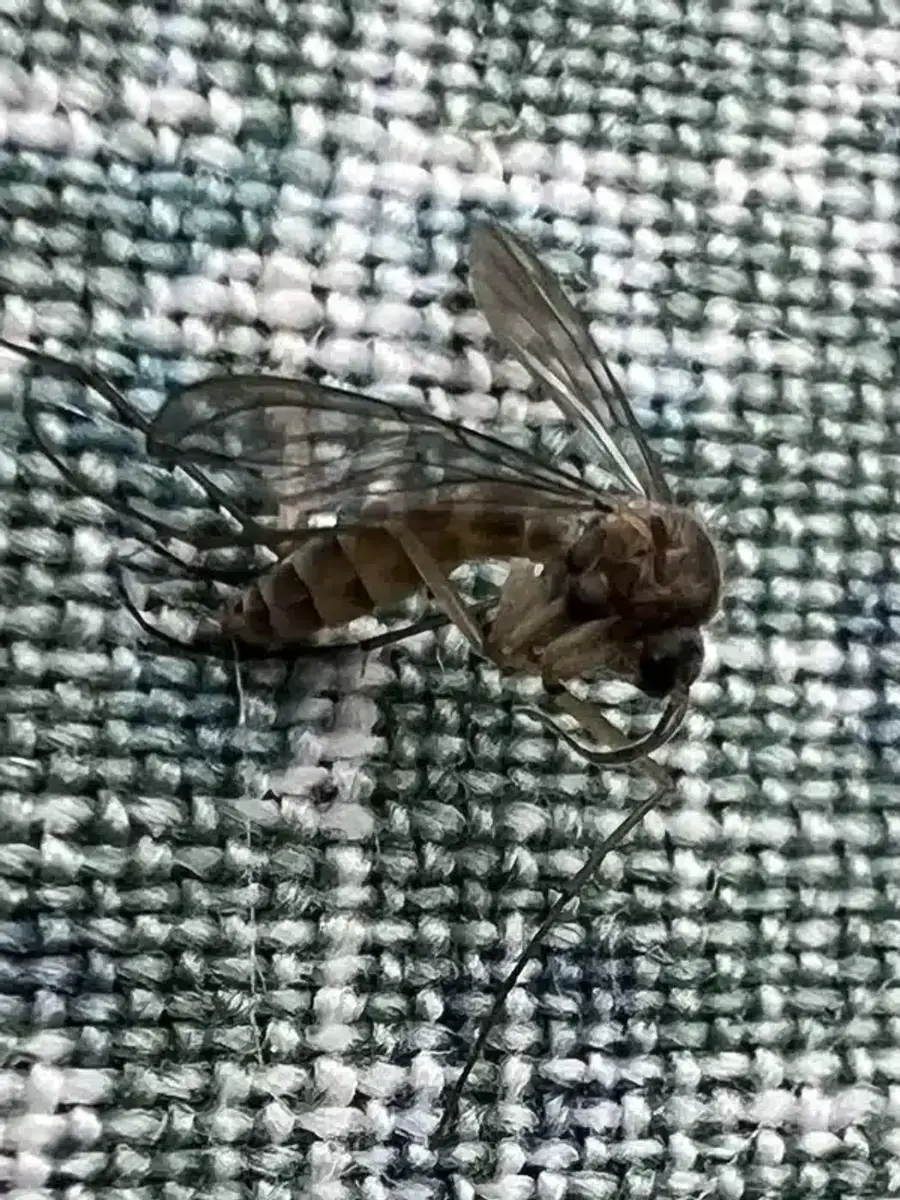
Fungus Gnat Appearance
Fungus gnats are also about 1/8 inch long, but they look completely different. They’re slender with long, delicate legs and dark gray or black bodies. Their small, dark eyes are nothing like the bright red eyes of fruit flies.
These gnats have a distinctive Y-shaped wing vein pattern. Their flight is weak and erratic - you’ll see them making unsteady flights near houseplants or windows.
Drain Fly Features
Drain flies range from 1/16 to 1/4 inch and look completely unique. They have fuzzy, moth-like wings that give them a heart-shaped appearance when they’re resting. You’ll usually spot them on bathroom walls or near sink drains.

Quick Identification Comparison
| Fruit Flies | Fungus Gnats | Drain Flies | |
|---|---|---|---|
| Eye Color | Bright red | Small & dark | Dark |
| Body Shape | Compact, tan-brown | Slender, long legs | Fuzzy, moth-like |
| Common Location | Kitchen & fruit bowls | Near houseplants | Bathroom walls |
| Flight Pattern | Slow hovering | Weak & erratic | Short flights |
Where Gnats Come From: Breeding Locations
Understanding where these flies breed is crucial for elimination. Each type has completely different preferences, which explains why generic treatments often fail.
Fruit Fly Breeding Sites
Fruit flies breed in fermenting or over-ripe produce. They love bananas, tomatoes, and any fruit that’s starting to go soft. They also breed in:
- Beer, wine, and vinegar residues
- Sugary spills and sticky surfaces
- Sometimes slimy drains with organic buildup
- Garbage disposals with food particles
According to the University of Maryland Extension, fruit flies can complete their life cycle from egg to adult in just 8-10 days at room temperature.
Fungus Gnat Development
Fungus gnats breed in the top half-inch of consistently moist potting soil. They need soil that’s rich in peat or organic matter. You might also find them breeding in:
- Overwatered houseplants
- Algae-lined drains
- Compost bins
- Greenhouses with high humidity
The Virginia Tech Cooperative Extension notes that fungus gnats complete their development in about 17 days at 75°F.
Drain Fly Breeding Areas
Drain flies breed in the gelatinous biofilm (that slimy layer) inside drains. They also develop in:
- Bathroom and kitchen drain traps
- Condensate pans in HVAC systems
- Sewer line leaks
- Any area with standing water and organic buildup
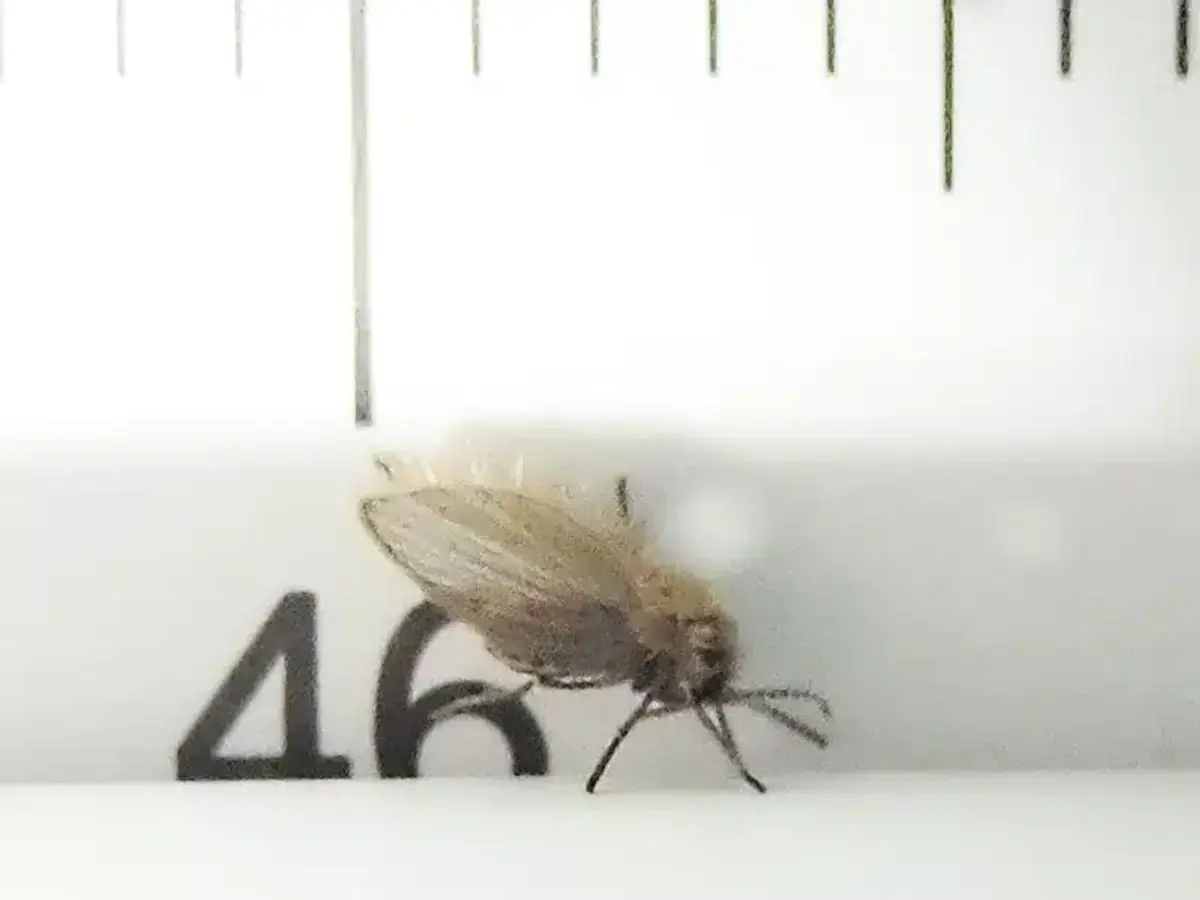
Behavior Patterns: How They Act
The way these flies behave gives you additional clues for identification. Each type has distinct movement patterns and preferred areas.
Fruit flies hover slowly around their food sources. They’re most active around fruit bowls, sink rims, and anywhere sweet substances might accumulate. They tend to be persistent and return to the same spots repeatedly.
Fungus gnats are weak fliers that stay close to potted plants. You’ll see them making short, unsteady flights from soil to nearby windows. They’re particularly noticeable when you water plants or disturb the soil.
Drain flies prefer to rest on vertical surfaces near moisture sources. They make short flights but quickly return to walls or surfaces near their breeding sites.
Which Pest Is More Annoying?
This depends entirely on your situation. From my experience serving families across Virginia, Maryland, and DC, here’s what I typically see:
Fruit flies cause the biggest food contamination concerns in kitchens. They can carry bacteria like Salmonella and E. coli, making them a health issue beyond just being annoying.
Fungus gnats become incredibly persistent in homes with many houseplants. They don’t pose health risks to people, but their larvae can damage plant roots and stunt growth.
Drain flies often indicate plumbing problems. When they emerge in large numbers from a drain, they can be spectacular and alarming. This is similar to how other pest identification matters - just like knowing the difference between clover mites vs chiggers helps target treatment.
Life Cycle Speed: How Fast They Multiply
Understanding reproduction rates helps explain why these problems can explode quickly. Each type multiplies at different speeds.
Fruit flies are reproduction champions. One female lays about 500 eggs, and the complete cycle from egg to adult takes just 8-10 days. Adults then live for several weeks, continuing to reproduce.
Fungus gnats complete their cycle in about 17 days at typical room temperature. Females lay up to 200 eggs, and you get overlapping generations year-round indoors.
Drain flies take 7-28 days from egg to adult, depending on temperature. Adults survive about two weeks, but new flies emerge daily once a population is established.
Pest Control Methods: Targeted Solutions
Here’s where proper identification really pays off. Each type of fly needs a completely different approach.
Eliminating Fruit Flies
Focus on removing their food sources and breeding sites:
- Remove or refrigerate all ripe fruit
- Clean up any sugary spills or sticky surfaces
- Rinse recyclable bottles and cans
- Make DIY vinegar traps with dish soap
- Deep-clean drains if they’re slimy
The key is eliminating every potential breeding site. Even one forgotten grape rolled under the refrigerator can restart the problem.
Controlling Fungus Gnats
Moisture management is everything with fungus gnats:
- Let the top 1-2 inches of soil dry between waterings
- Try bottom-watering techniques
- Use yellow sticky cards for monitoring
- Apply mosquito dunks (Bti) to soil if needed
- Repot severely infested plants with fresh, sterile soil
Remember, you’re breaking their breeding cycle by removing the moist conditions they need.
Drain Fly Elimination
This requires physical removal of the biofilm where they breed:
- Scrub drain walls with a brush
- Flush with boiling water
- Use enzyme drain cleaners for organic buildup
- Repair any plumbing leaks
- Keep floor drains filled with clean water
The University of Maryland Extension emphasizes that you must physically remove the breeding material - chemicals alone won’t solve drain fly problems.
What does the science say?
According to the University of Maryland Extension, fruit flies can complete their life cycle from egg to adult in just 8-10 days at room temperature, making rapid reproduction their biggest advantage in establishing infestations.
The Virginia Tech Cooperative Extension research shows that fungus gnats complete their development in about 17 days at 75°F, with larvae requiring consistently moist organic matter for successful development.
Research from university extension services confirms that each fly type has distinct habitat requirements and breeding cycles, which explains why species-specific control methods are essential for effective elimination rather than generic treatments.
Why Professional Identification Matters
In my four years as a registered technician, I’ve seen homeowners waste weeks trying the wrong solutions. A vinegar trap won’t catch fungus gnats. Letting soil dry won’t stop fruit flies breeding in a forgotten wine bottle.
Case Study: When Kitchen Flies Turned Out to Be Three Different Problems
A Bethesda family called us after struggling with “fruit flies” for three months. They had tried every DIY solution online, but the problem kept getting worse. When our technician arrived, we discovered they actually had three different fly problems simultaneously.
- Fruit flies: Breeding in a forgotten onion that had rolled behind their fruit bowl stand
- Fungus gnats: Coming from overwatered peace lilies in their sunroom
- Drain flies: Emerging from a slow drain in their powder room sink
The solution required three different approaches - removing the hidden onion, adjusting watering schedules, and professionally cleaning the drain biofilm. Within two weeks, all flies were eliminated.
Proper identification aligns your control efforts with the pest’s biology. This is similar to why correctly identifying other pests matters - whether you’re dealing with termites vs ants or crane flies vs mosquitoes.
Professional pest control becomes necessary when:
- Multiple fly types are present simultaneously
- Breeding sources are hidden or inaccessible
- DIY efforts haven’t worked after 2-3 weeks
- The problem keeps returning despite your efforts
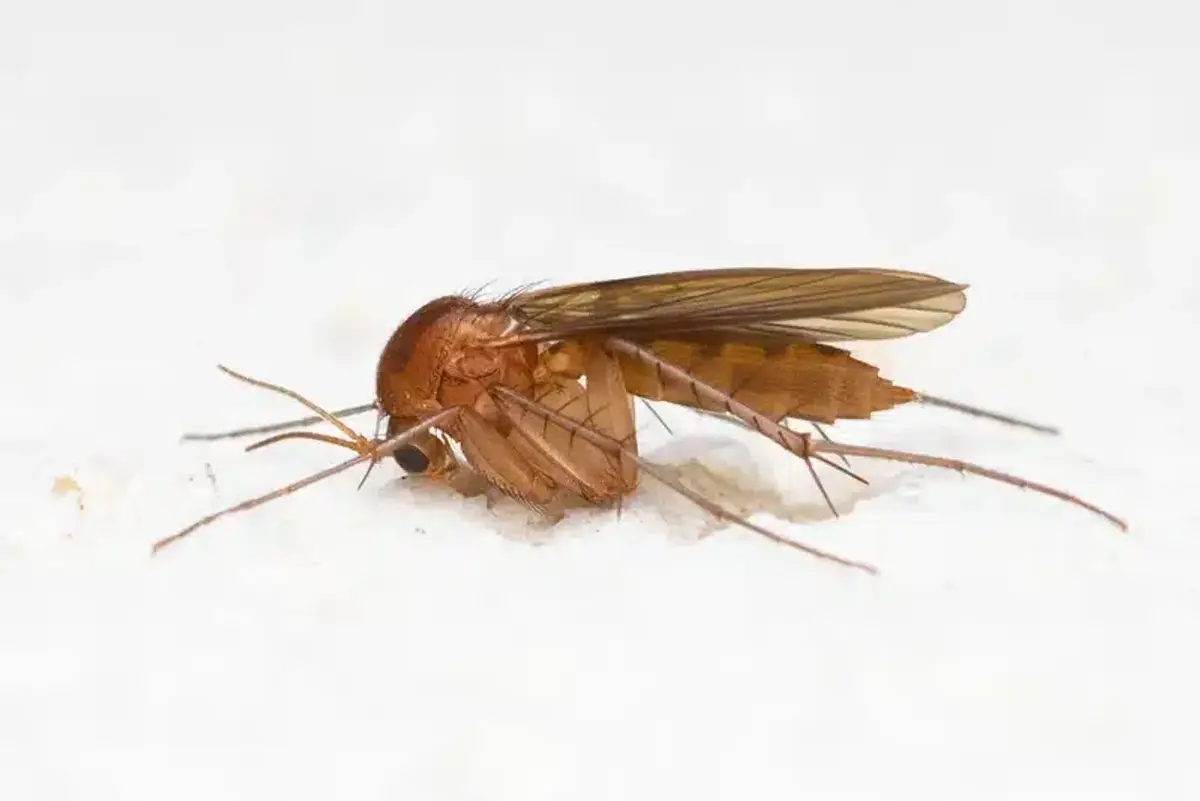
Seasonal Considerations in the DMV Area
Living in Virginia, Maryland, and DC means dealing with seasonal patterns that affect these flies. Our warm, humid summers speed up all life cycles, leading to peak fruit fly pressure from July through September when local produce is abundant.
Indoor plants overwintered inside from October through March create perfect conditions for fungus gnat outbreaks. Lower light and cooler temperatures mean slower evaporation and consistently moist soil.
Older homes in DC, especially row houses with aging plumbing, often develop hairline leaks that create ideal drain fly breeding conditions. The high humidity in our area makes these problems worse.
Pest Prevention Strategies That Actually Work
The best approach combines identification knowledge with targeted prevention. For fruit flies, maintain clean surfaces and proper food storage. Cover fruit bowls and clean up spills immediately.
Prevent fungus gnats by adjusting watering habits before problems start. Bottom-watering and allowing soil to dry between waterings eliminates their breeding opportunities.
Drain fly prevention requires regular drain maintenance. Monthly cleaning and keeping drains flowing properly prevents the biofilm buildup they need.
Just like our comprehensive mosquito control process targets the pest’s biology, effective fly control requires understanding each species’ specific needs.
Essential Prevention Steps
- For Fruit Flies: Store ripe fruit in the refrigerator, clean up sugary spills immediately, and rinse recyclable containers before storage
- For Fungus Gnats: Allow soil to dry between waterings, use bottom-watering methods, and avoid overwatering houseplants
- For Drain Flies: Clean drains monthly with hot water and brushing, fix leaks promptly, and keep floor drains filled
- Universal Prevention: Maintain clean surfaces, address moisture issues quickly, and perform regular inspections of potential breeding sites
When to Call Professionals
Sometimes DIY efforts aren’t enough. Our family business has been helping DMV area homeowners for over 50 years, and we’ve learned that some situations require professional intervention.
Call professionals when you have multiple fly types simultaneously, hidden breeding sources, or persistent problems despite following proper control methods. We can identify exactly what you’re dealing with and target our treatment accordingly.
Professional pest control also makes sense when you want comprehensive solutions. Our programs address not just current problems but prevent future issues through regular monitoring and treatment.
If you’re struggling with gnats vs fruit flies identification or any other flying pest issues, don’t waste more time with trial-and-error approaches. Call us at 703-683-2000 for expert identification and targeted treatment, or email us at info@bettertermite.com. Our registered technicians can quickly identify your specific fly problem and implement the right solution the first time.
Frequently Asked Questions
Are fruit flies the same as gnats?
+
Fruit flies are actually a type of gnat, but they have specific characteristics that set them apart. While "gnat" is a broad term for many small flies, fruit flies belong to the Drosophilidae family and have bright red eyes, tan-brown bodies, and breed specifically in fermenting organic matter.
How can I tell if I have fruit flies or fungus gnats?
+
Look at their eyes and where you see them. Fruit flies have bright red eyes and hover around kitchens, fruit bowls, and sinks. Fungus gnats have small dark eyes, are more slender with longer legs, and you'll see them near houseplants or flying weakly around windows.
Which is harder to get rid of - gnats or fruit flies?
+
It depends on the specific type and your situation. Fruit flies can be eliminated relatively quickly by removing their food sources and using vinegar traps. Fungus gnats require changing watering habits and may take longer to control. Both are manageable with the right approach for each species.
Do fruit flies and gnats bite people?
+
Common indoor fruit flies and fungus gnats don't bite people. However, some outdoor gnats like biting midges (no-see-ums) do bite. The small flies you see around your kitchen or houseplants are typically non-biting species that are just nuisances.
Why do I keep getting fruit flies even after cleaning everything?
+
Fruit flies can breed in hidden spots like garbage disposals, recycling bins, or even a single grape rolled under an appliance. They can also develop in slightly slimy drains. Check all potential breeding sites including behind appliances, in recycling containers, and inside all drains.
How fast do these flies reproduce?
+
Fruit flies reproduce extremely quickly - they can go from egg to adult in just 8-10 days, with females laying up to 500 eggs. Fungus gnats take about 17 days for a complete cycle. This rapid reproduction explains why small problems can become major infestations quickly.
Will these flies go away on their own?
+
No, they won't disappear without intervention. As long as suitable breeding sites exist (fermenting fruit for fruit flies, moist soil for fungus gnats), they'll continue reproducing. You must eliminate their breeding sources to stop the problem.
Can I use the same treatment for all types of small flies?
+
No, each type requires different control methods. Fruit flies need food source removal and vinegar traps. Fungus gnats require soil moisture management. Drain flies need physical cleaning of breeding sites. Using the wrong method wastes time and allows populations to grow.
With five years of hands-on experience in the pest control industry, George Schulz is a registered technician with the Virginia Pest Management Association and a proud third-generation professional in a family business that's been protecting homes for over 57 years. He manages and trains a team of service pros while also leading internal research efforts—recently spearheading a deep-dive review of thousands of documents on pest control materials to hand-pick the most kid and pet friendly, most effective solutions tailored specifically for homes in the DC metro area.
